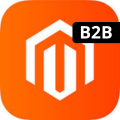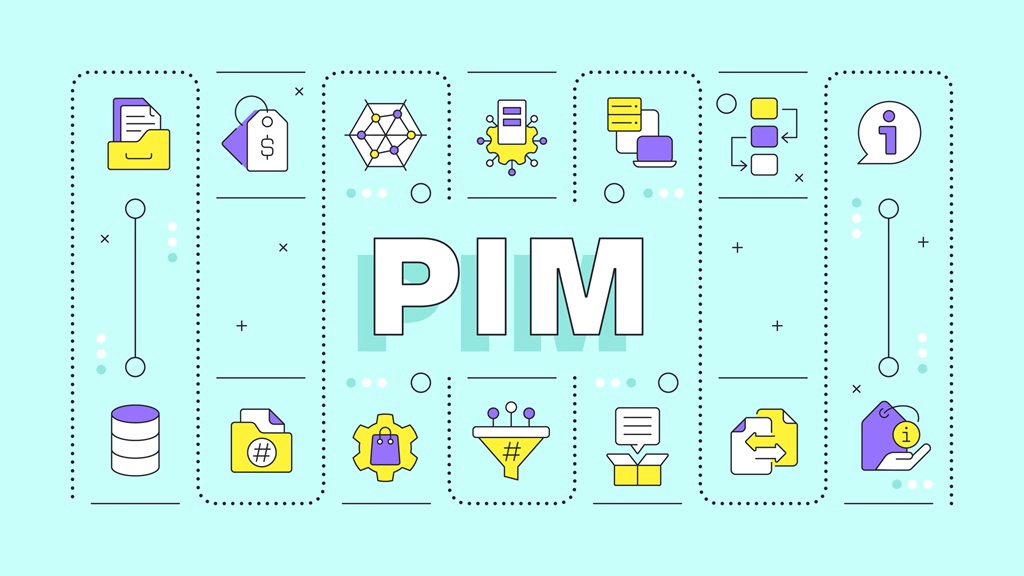Nvision blog
Why today's B2B buyers expect a B2C-like digital experience
....and how to deliver it.
The days when B2B companies who are selling physical products could get away with an informative-only website or a basic webshop are behind us. A big shift has occurred in how B2B buyers want to purchase — and companies that don’t keep up risk being left behind. This article explores the current trends in B2B buying behavior and offers actionable strategies for businesses to effectively navigate this digital transition.
Recent studies underscore a clear trend: B2B buyers are increasingly favoring digital over traditional. According to Gartner, 83% of B2B buyers now prefer ordering and paying through digital channels. Additionally, 77% conducts their own research before engaging with a salesperson — if at all. And it’s not just about convenience. Research shows that buyers who self-navigate online are more likely to make high-quality purchases — 65% compared to just 24% of those who order through a sales rep.
So what’s driving this shift?
Digital natives bring their B2C expectations into the B2B space
Today’s B2B decision-makers are increasingly millennials and Gen Z professionals who grew up with ecommerce. In fact, more than two-thirds are between the ages of 18 and 40. These digital natives bring their personal online shopping habits into the workplace — and they expect the same experience when buying for their business.
Speed, transparency, and control over the buying process are essential. These buyers want to browse, compare, and purchase on their own time, often outside of traditional business hours, and they expect the experience to be just as intuitive and seamless as buying from Amazon or Bol.com.
What B2B buyers want — and expect
Modern B2B buyers are no longer satisfied with a product catalog or a “call us for pricing” approach. Instead, they’re looking for rich, self-service experiences with:
👉 Detailed product information – This includes specifications, dimensions, materials, compatibility data, documentation, and user manuals, all easily accessible on the product page.
👉 High-quality images and videos – Multiple angles, zoom functionality, and videos showing the product in action help customers make confident decisions.
👉 Advanced search and filtering – A robust layered navigation system with filters by category, brand, size, or material can reduce friction and help customers find what they need faster.
👉 Quick reordering – Buyers want to reorder previously purchased items with just one click, and they expect clear access to their order history.
👉 A great mobile experience – According to BCG, 60% of B2B buyers say mobile played a significant role in a recent purchase. If your webshop isn’t optimized for mobile, you’re likely losing business.
In short, B2B buyers expect the same ease, transparency, and speed they’re used to in their personal lives. If your digital experience falls short, they won’t hesitate to find another supplier who does it better.
Implications for B2B sales strategies
The move towards digital channels has significant implications for B2B sales strategies. Buyers now expect a purchasing experience that matches the convenience and efficiency of their B2C transactions. This includes access to detailed product information, transparent pricing, real-time stock availability, and personalized recommendations. Businesses that fail to meet these expectations risk losing customers to competitors who offer a more seamless digital experience.
Moreover, the preference for self-service means that traditional sales approaches, which rely heavily on direct interactions with sales representatives, are becoming less effective. Companies need to rethink the role of their sales teams, focusing on how they can support and enhance the digital buying journey rather than control it.
Strategies for adapting to the digital B2B landscape
To remain competitive in this evolving environment, B2B companies should consider the following strategies:
1. Digital presence and content
Given that most of the buying journey now happens online, it's important for businesses to have a great digital presence. This involves not only having a user-friendly website but also providing comprehensive and easily accessible content that helps buyers in their research and decision-making process.
2. Self-service portals
Self-service portals allows buyers to access information, place orders, and manage their accounts whenever they want. Features such as personalized dashboards, order tracking, easy reordering, and sales document history can improve the customer experience and brand loyalty. According to a survey, 87% of buyers want to self-serve part or all of their buying process.
3. Data analytics for personalization
Data analytics can provide insights into buyer behavior and preferences, enabling businesses to offer personalized recommendations and targeted marketing. This again, can improve the customer experience but it can also increase the conversion rate.
4. Digital and human interaction
While digital channels are becoming predominant, the human element remains part of the journey for some. Sales teams should be equipped to engage with buyers who seek assistance during their purchasing process.
5. Mobile optimization
With the increasing use of mobile devices in professional settings, ensuring that your online store is mobile-friendly is essential. According to BCG-research, 60% of B2B buyers report that "mobile played a significant role in a recent purchase."
6. Transparant pricing and product availability
Buyers expect transparency in pricing and product availability. Providing real-time information on stock levels and clear pricing structures can build trust and help in the decision-making process. When a product is out of stock, show the customer the date when that product is available again and give them the possibilty to place a back order so you don't lose any sales opportunities.
7. Flexible payment and shipping options
Flexibility in payment methods and shipping options can enhance the purchasing experience. Options such as pay-by-invoice, prepayment, and multiple delivery locations cater to the diverse needs of B2B buyers.
Integrate Magento with Business Central
Delivering a B2C-like experience in the B2B world isn’t just about having a great webdesign and UI. It’s also about integrating the systems that you use.
At NVision Commerce Solutions, we help businesses bridge the gap between ERP and ecommerce with Commerce 365 for Magento — an out-of-the-box integration between Magento and Microsoft Dynamics 365 Business Central.
Magento is the perfect ecommerce platform to give today's B2B buyers exactly what they want: the same digital experience as they're used to as a consumer. And by integrating Magento with Business Central, you can use your ERP data on your storefront for B2B functionalities.
Here is a brief overview of what you can do with this integration.
✅ Advanced pricing – Customer-specific pricing, group pricing, and tiered discounts based on your BC pricelists.
✅ Sales document history – In their online account, your B2B customers have access to all their quotes, orders, invoices, shipments, and credit memos — including those from past offline purchases.
✅ Sub-accounts – Manage multiple buyers under a single company.
✅ Payment methods – Let customers pay by invoice or prepayment, based on their credit limit and balance.
✅ Custom shipping options – Allow customers to select from multiple delivery locations, such as warehouses, production facilities, or different retail stores.
✅ Built-in PIM module – Intuitive category management, drag-and-drop images and videos, short and long descriptions, attributes, cross-sell/up-sell, grouped and configurable products.
✅ Product attachments – Enrich your product pages by uploading any document from Business Central, like user manuals, specs, certificates, installation guides, and more.
✅ Personalization – Use order attributes and customer attributes to personalize your checkout and registration process.
This is why it matters
The shift to digital-first buying in B2B is accelerating. According to McKinsey, 80% of B2B companies now prefer to conduct sales digitally rather than face-to-face. This isn’t a temporary trend — it’s a long-term evolution of the B2B buying process.
Failing to adapt to this reality doesn’t just mean losing out on new customers — it also puts existing relationships at risk. Buyers expect their suppliers to grow with them. If your competitors are providing a better buying process, you can be sure your customers are taking notice.
Ready for B2B in 2025?
If you’re using Business Central and want to offer your customers the digital experience they now expect, Commerce 365 for Magento - B2B can help you get there faster.
You don’t need to build everything from scratch. NVision has an out-of-the-box integration between Magento and Microsoft Dynamics 365 Business Central. This is an easy and quick way to improve your B2B buying experience to meet 2025 digital sales standards.
Want to see how it works?









